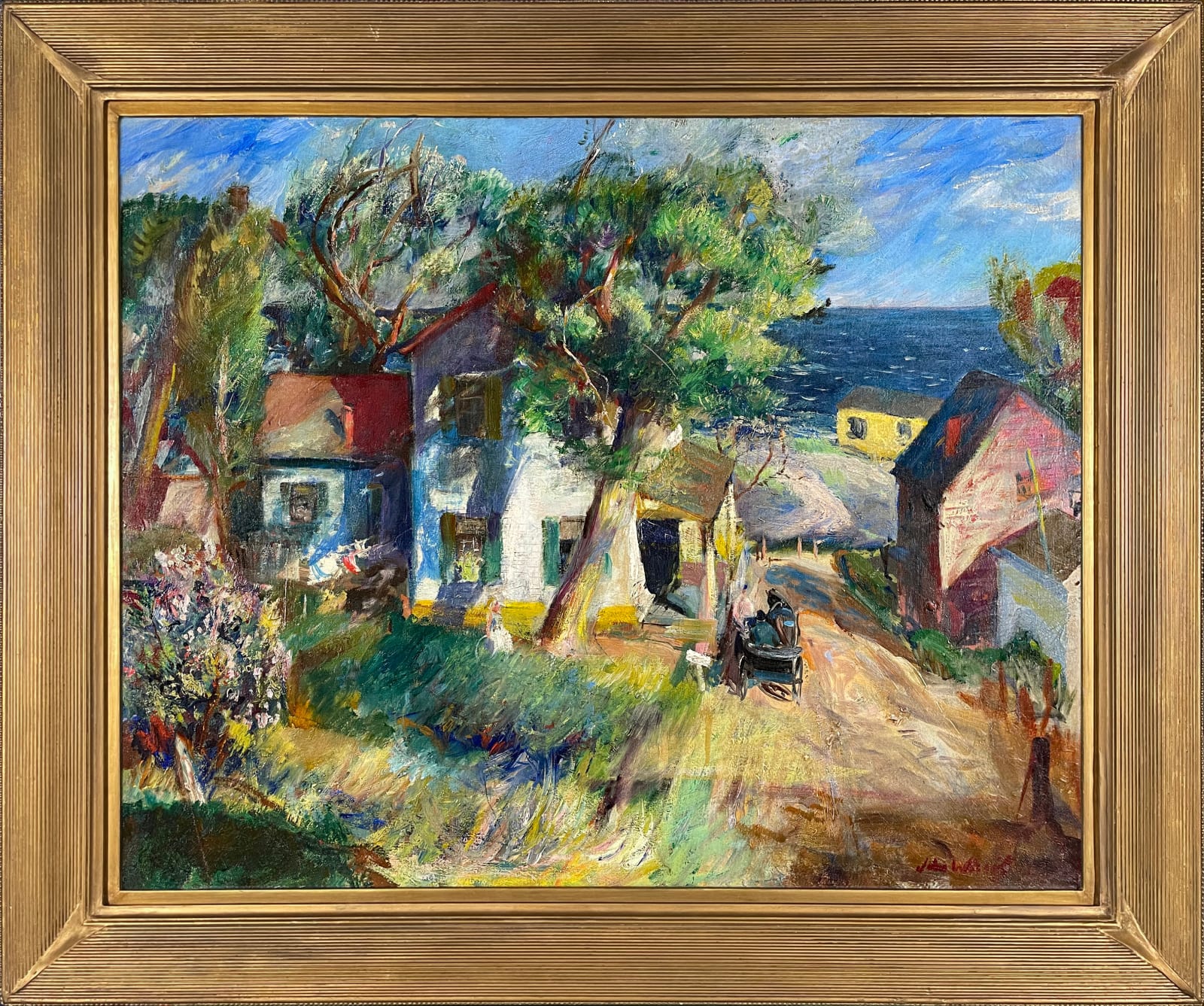John Whorf 1903-1959
Provincetown Seaside Landscape
Oil on canvas
30 x 36 inches (76.2 x 91.4 cm)
Framed dimensions: 36 x 43 1/4 inches
Framed dimensions: 36 x 43 1/4 inches
Signed lower right: John Whorf
John Whorf was born in Boston in 1903. His father, Harry Whorf, was an artist and graphic designer. When John decided at a young age to become an artist himself,...
John Whorf was born in Boston in 1903. His father, Harry Whorf, was an artist and graphic designer. When John decided at a young age to become an artist himself, his father provided early instruction and encouragement. When he was 14, Whorf enrolled in art classes at the St. Botolph Studio and the Museum of Fine Arts School, but ultimately he eschewed formal training, opting instead to simply “paint.” As with most artists, Whorf longed to travel abroad. After recovering from an accident that left him temporarily paralyzed, he set out on his first journey to Europe at the age of eighteen. During that time, he began painting with watercolor, and found that it suited him and his lifestyle better than oils. A difficult medium to master, watercolor requires that an artist work quickly, almost intuitively.
Whorf’s ability to capture natural colors and blend them with shadow and light earned him renown. In 1924 he had his first one-man show at the Grace Horne Gallery in Boston. More than fifty of his paintings sold during that exhibition, and his reputation as a leading watercolorist was secured. Throughout his life, Whorf exhibited in galleries in New York and Boston. And in 1947 he was elected as a member of the National Academy of Design.
Whorf created realist depictions of urban and rural imagery, but his finest inspiration came from the Cape Cod landscape, where he ultimately settled. As a whole, his works have the uncanny ability to take his viewer to the everyday scenes of Provincetown as well as to the more exotic locales of Europe and North Africa. Though he is better known as a watercolorist, Whorf also produced remarkable oil paintings, such as Provincetown Summer Landscape. The scene is rendered with thick impasto and loose brushwork, which creates a sense of dynamic energy throughout the composition.
Whorf’s ability to capture natural colors and blend them with shadow and light earned him renown. In 1924 he had his first one-man show at the Grace Horne Gallery in Boston. More than fifty of his paintings sold during that exhibition, and his reputation as a leading watercolorist was secured. Throughout his life, Whorf exhibited in galleries in New York and Boston. And in 1947 he was elected as a member of the National Academy of Design.
Whorf created realist depictions of urban and rural imagery, but his finest inspiration came from the Cape Cod landscape, where he ultimately settled. As a whole, his works have the uncanny ability to take his viewer to the everyday scenes of Provincetown as well as to the more exotic locales of Europe and North Africa. Though he is better known as a watercolorist, Whorf also produced remarkable oil paintings, such as Provincetown Summer Landscape. The scene is rendered with thick impasto and loose brushwork, which creates a sense of dynamic energy throughout the composition.
Provenance
The artist;Private collection, Hingham, MA;
By descent in the family, until 2019;
Parco Fine Art, Ipswich, MA, until 2024
Please join our mailing list
* denotes required fields
We will process the personal data you have supplied in accordance with our privacy policy (available on request). You can unsubscribe or change your preferences at any time by clicking the link in our emails.



